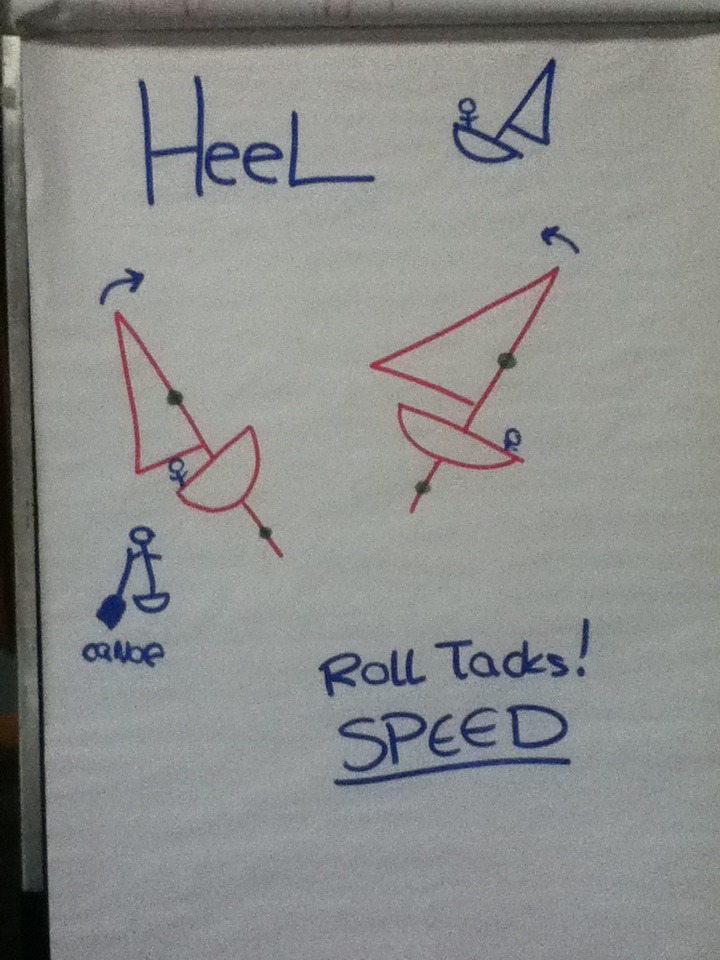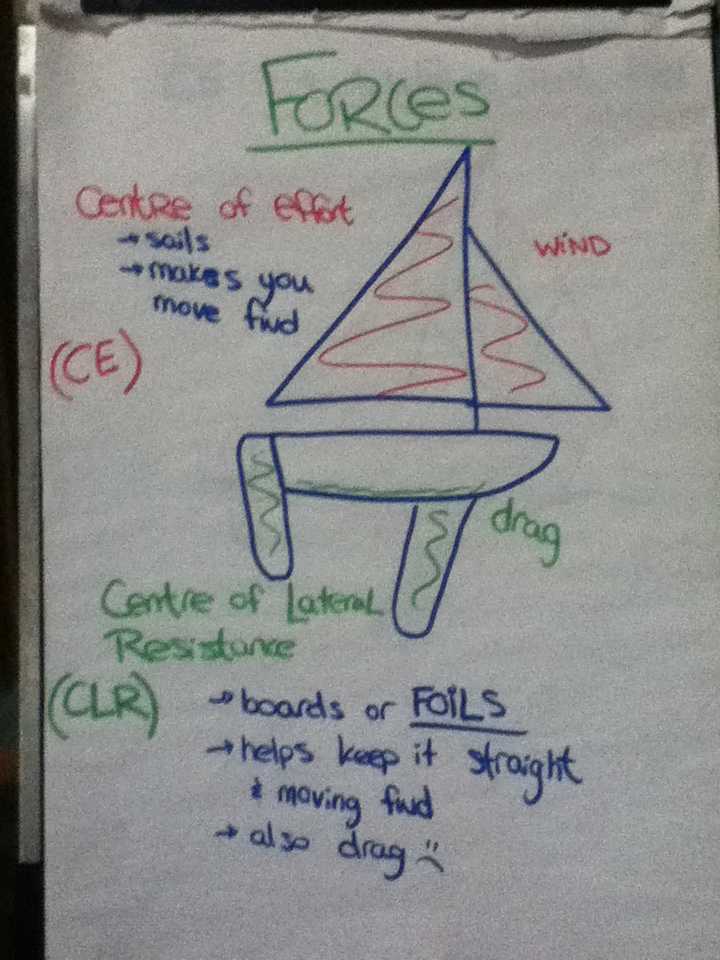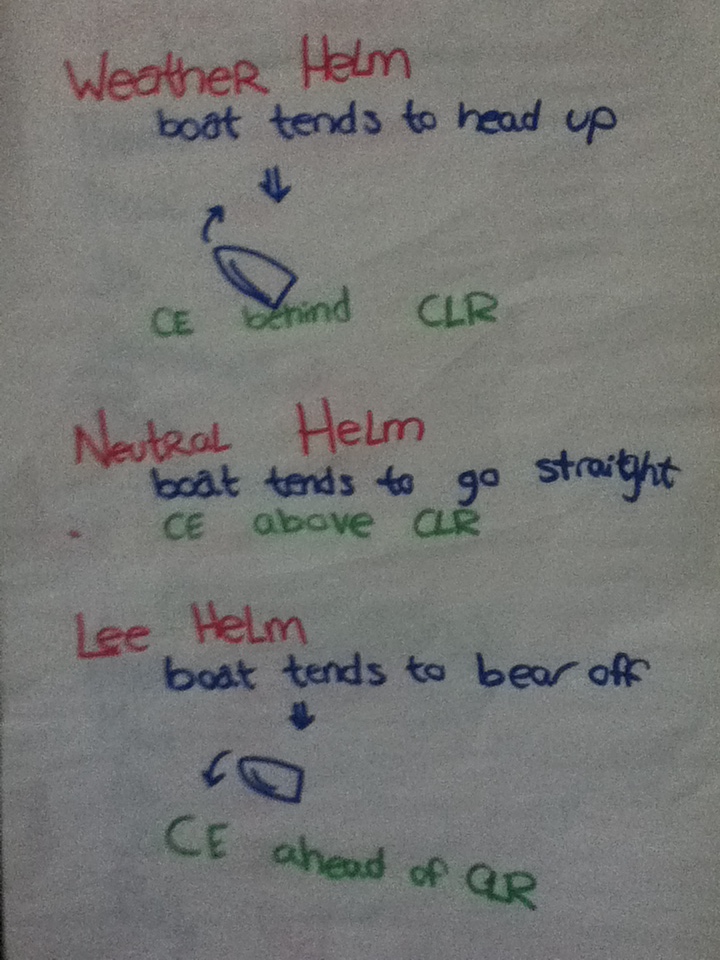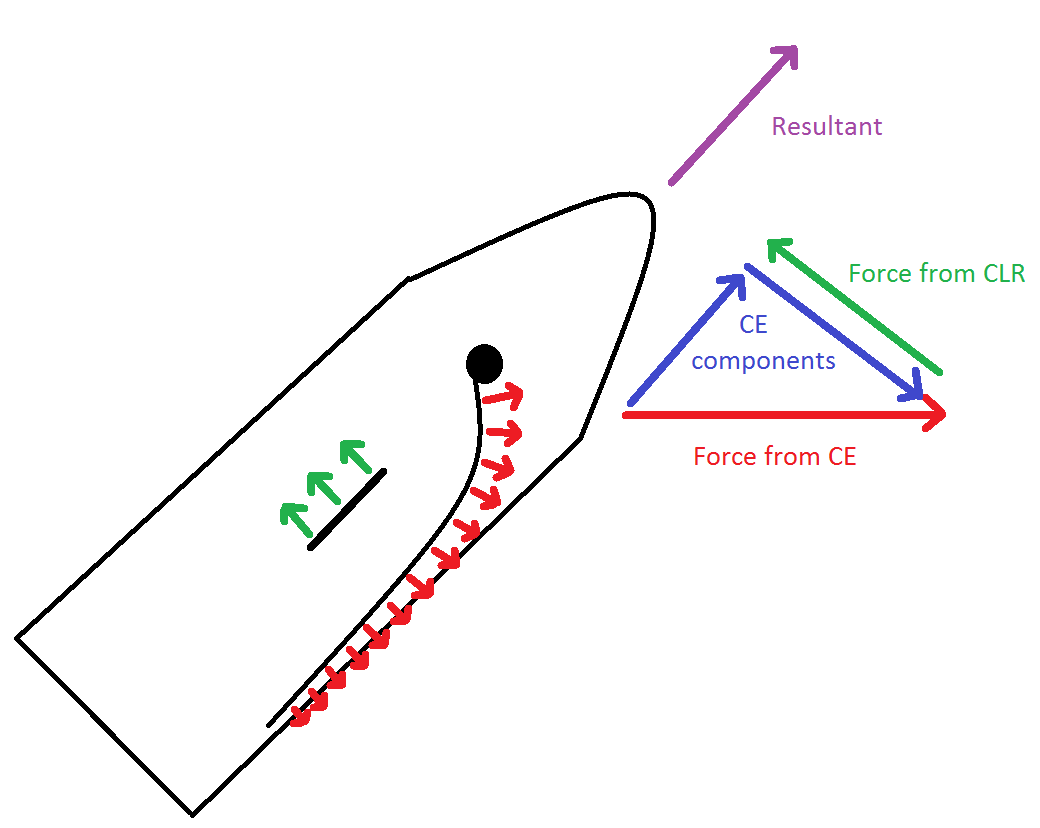As a certified sailing instructor I spend my summer teaching children, and adults, how to sail. As with any highly complex activity there are many concepts one has to understand in order to make a sail boat move. These concepts, at the most fundamental level, are things like understanding where the wind is coming from, how to orient your boat to the wind, and how your sails should be set for the point of sail you are on. All of these concepts are extremely important things to understand for one to be able to sail a boat. I am writing this so as to break down some of these concepts that are behind what actually makes you boat move. Understanding the physics that makes a boat sail is something I find extremely important to being a good sailor as without this knowledge you are missing key concepts which are vital to being able to sail properly. The following is an overview of these physics concepts in terms that can be easily understood by someone with a basic grounding in physics.
What makes a sail boat moves can in the simplest terms be broken down into two sets of forces, the Centre of Effort (CE) and the Centre of Lateral Resistance (CLR)
Centre of Effort
What makes a sailboat exceptional is that it uses the wind as a means to move around in a body of water. As such, the effort applied to the boat comes in the form of wind forces on the sails. These wind forces, when applied at the right angle, are the biggest influence on what makes your boat move.
Centre of Lateral Resistance
With only wind forces accounted for your sail boat one would be blown in whatever direction the wind is was blowing at the time. This problem is remedied by the boat hull and control surfaces, the rudder and centreboard. These surfaces, the rudder and centreboard in particular, counteract some of the forces applied to the sails through their wide lengthwise surface area, something that will be explained in greater detail later on.
To understand how the CE and CLR are important in making a boat move you first have to understand how they interact with each other.
Each of the individual surfaces on the boat, the boards and the sails, have their own individual CE or CLR. This is representative of the location of the centroid, or average of forces on each individual component. One can also find the complete CE and CLR of the sails and boards respectively by averaging out their contribution to the overall applied forces on the sails or boards. In the image above each component is marked with its own centroid as well as the overall CE in the luff of the main sail, right behind the mast part way up the main sail, and the overall CLR, right behind the centreboard. Though the scale of this diagram is not great the intention is that when a boat is designed, the CE be directly above the CLR.
Understanding how these interactions works is essential to sailing and will allow you to have better control over your boat.
The following is an easy visual tool to demonstrate how the alignment of these forces actually works. Take a pencil and hold it between your thumb and index finger, with the sharp end pointing to the left. For the purposes of this exercise your thumb represents the forces applied by the wind on your sails (you can pretend that the wind is blowing from your mouth towards your hand) while your index finger represents the lateral resistive forces of the boats board surfaces. With your two fingers lined up on either side of the pencil it stays in the position you are holding it, representative of your sail boat sailing in a strait line. With one force (finger) in front of the other the pencil wants to turn either away from the wind (if your thumb (CE) is in-front of your index finger (CLR)), called Lee Helm (the tendency to bear off), or turn towards the wind (if your thumb (CE) is behind your index finger (CLR)), known as Weather Helm (the tendency to head up).
Sailing by the Wind
Sailing is a sport that is hugely reliant on the wind you are sailing in, both in intensity and direction. As such, knowing where the wind is coming from and how that affects where you can sail makes a huge difference. There are three forces involved in the wind that affects a sailboat (see Fig. 4). The true wind is the wind you would encounter if you were stationary, the boat wind is the wind caused by your boat moving forward, and the apparent wind is the combination of those two. A good way to think about the apparent wind is it is similar in concept to the wind felt when traveling in a car with the top down.
When trying to sail in the direction the wind is coming from (upwind) you cannot actually sail directly towards the wind, rather, you have to tack back and forth sailing at angles close to the wind. When figuring out what these angles are you need to be looking at the apparent wind as that is the wind that you actually encounter while sailing.
CE and CLR Vectors
When it comes to how the CE and CLR forces actually make your boat towards the wind it can seem like an impossible task. A sailboat sails, as mentioned above, uses a combination of the CE and CLR forces to move in the water. In the diagram above the forces in red are the CE while the CLR forces are shown in green. While the CLR acts perpendicular to how the boat is pointed the CE acts at an angle to the boat. If we break down the CE force into its components (in blue) we can now see how the CE and CLR interact with one another. When happens is the CLR force cancels out the one CE component forces by acting in an equal and opposite direction, leaving just the forward CE component force. This remaining force (labeled as the resultant) is what actually makes the boat sail forward and towards the wind.

Fig. 6
Heel
Heel, or how much a boat is leaning to one side or the other, also plays a huge part in how the CE and CLR effect a boats Lee and Weather Helm. The same Lee and Weather Helm tenancies used to head up and bear off that apply when looking at forces from a profile perspective are also applicable in a portrait perspective. When a sail boat is heeled over (as shown in Fig. 6) the CE is no longer above the CLR. The result of this is similar to what happens when the CE and CLR are misaligned viewed in a profile perspective. When the boat is heeled over to Leeward (away from the wind) it has a tendency to head up (Weather Helm) while if it heels over to Windward (towards the wind) then the boat will have a tendency to bear off (Lee Helm). To understand how this works you could modify the pencil trick from above, instead I will use the analogy of paddling a canoe.
A heeled over sail boat is just like paddling a canoe in that both situations have the force intending to move the boat, the wind on the sails and the paddle in the water respectively, situated over the water instead of over the boat. In the case of a canoe when you paddle on one side of the boat continuously you will start turning away from the side you are paddling on. The same applies on a sail boat as when the sails (and thus the CE) are on one side, the boat will turn away from the side the sails are on.
Being able to control when and how much a boat heals over is an important sailing skill and is a building block for rudderless sailing, roll tacking, and key tools for helping reduce unnecessary drag throughout sailing. When a sailor uses the rudder to turn the boat they are also blocking propper water flow over the control surfaces. By being able to turn the boat without using as much rudder movement means less drag to slow the boat down. With this new knowledge of how a boat can head up and bear off without the use of the tiller one can augment traditional sailing situations where one would need to head up and bear off with the addition of boat heal and sail trim adjustment. This can make tacks, gybes, course changes, and mark-roundings smoother, something which is an indication of a skilled sailor




